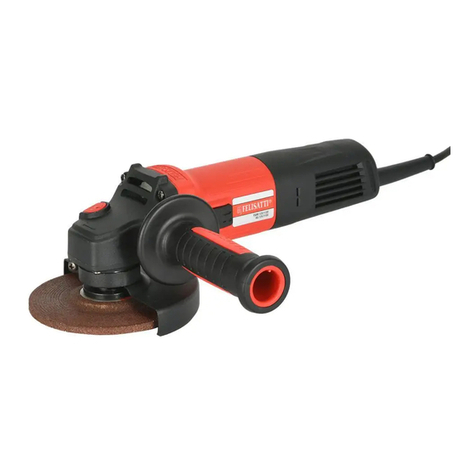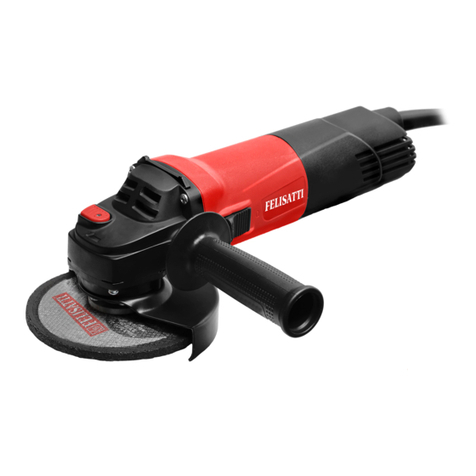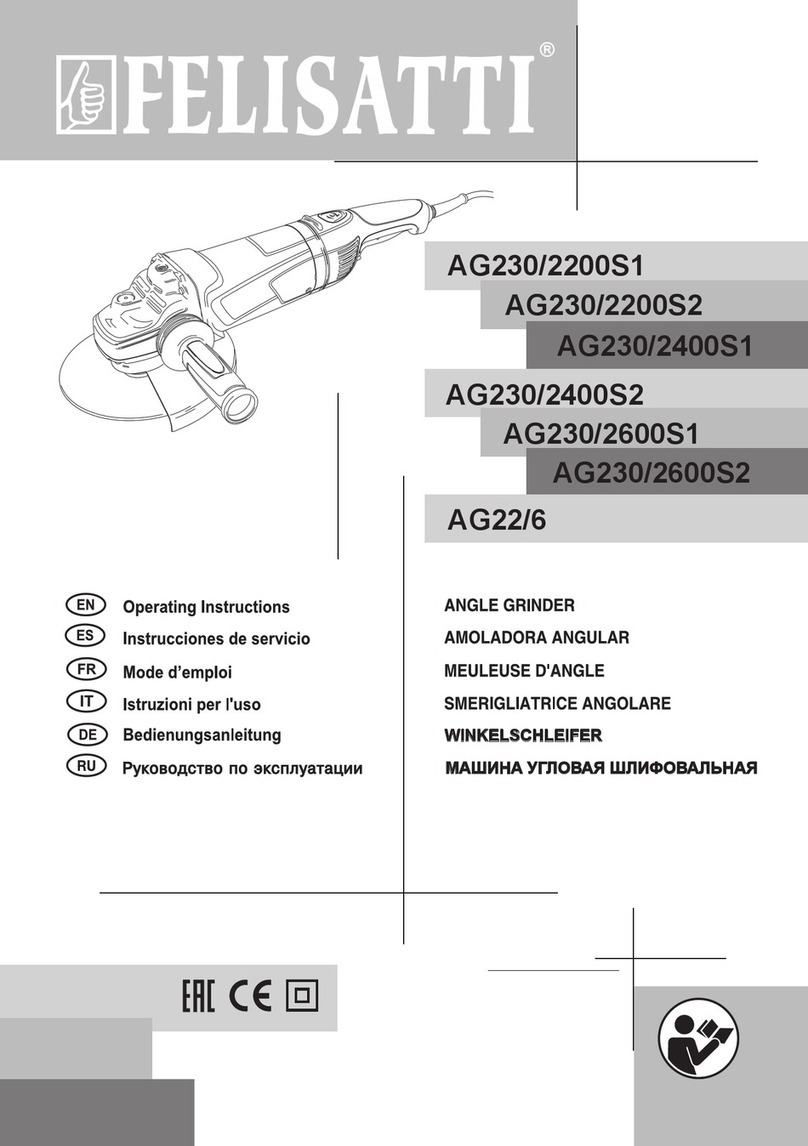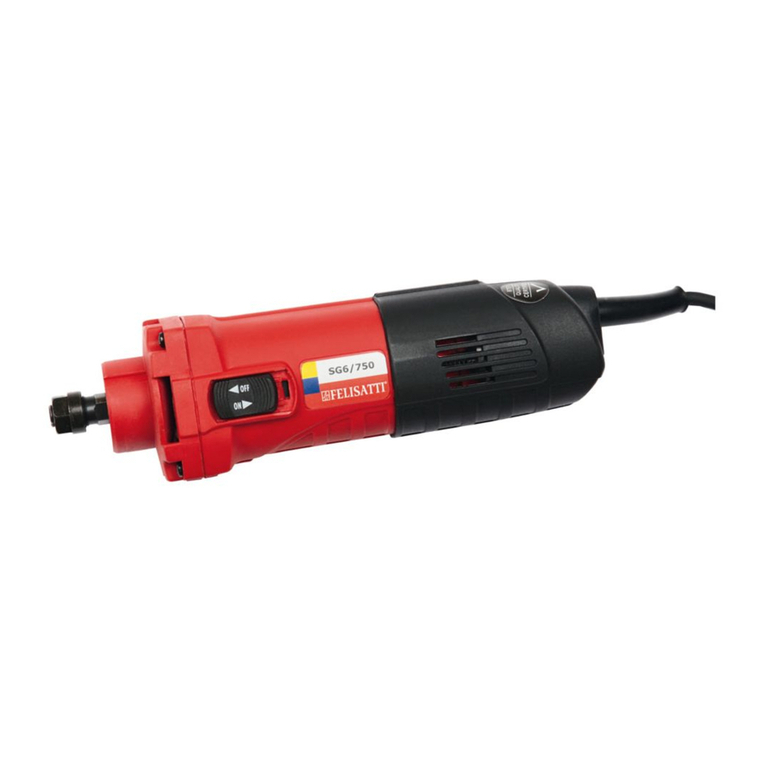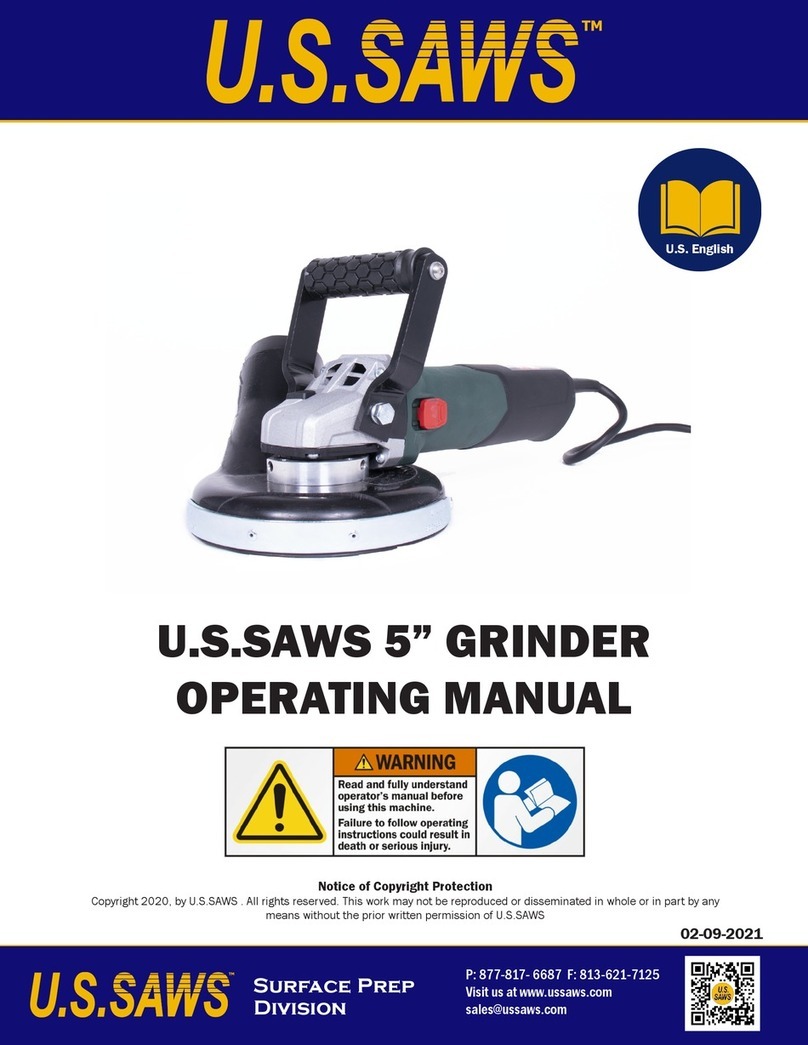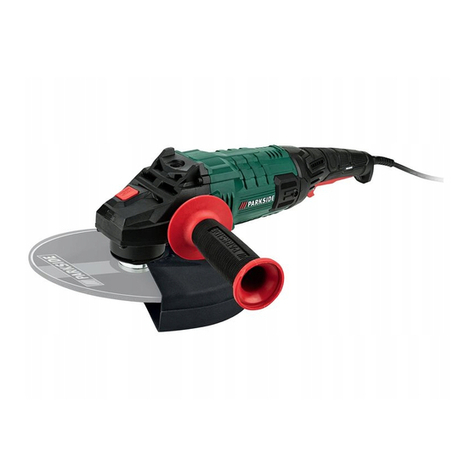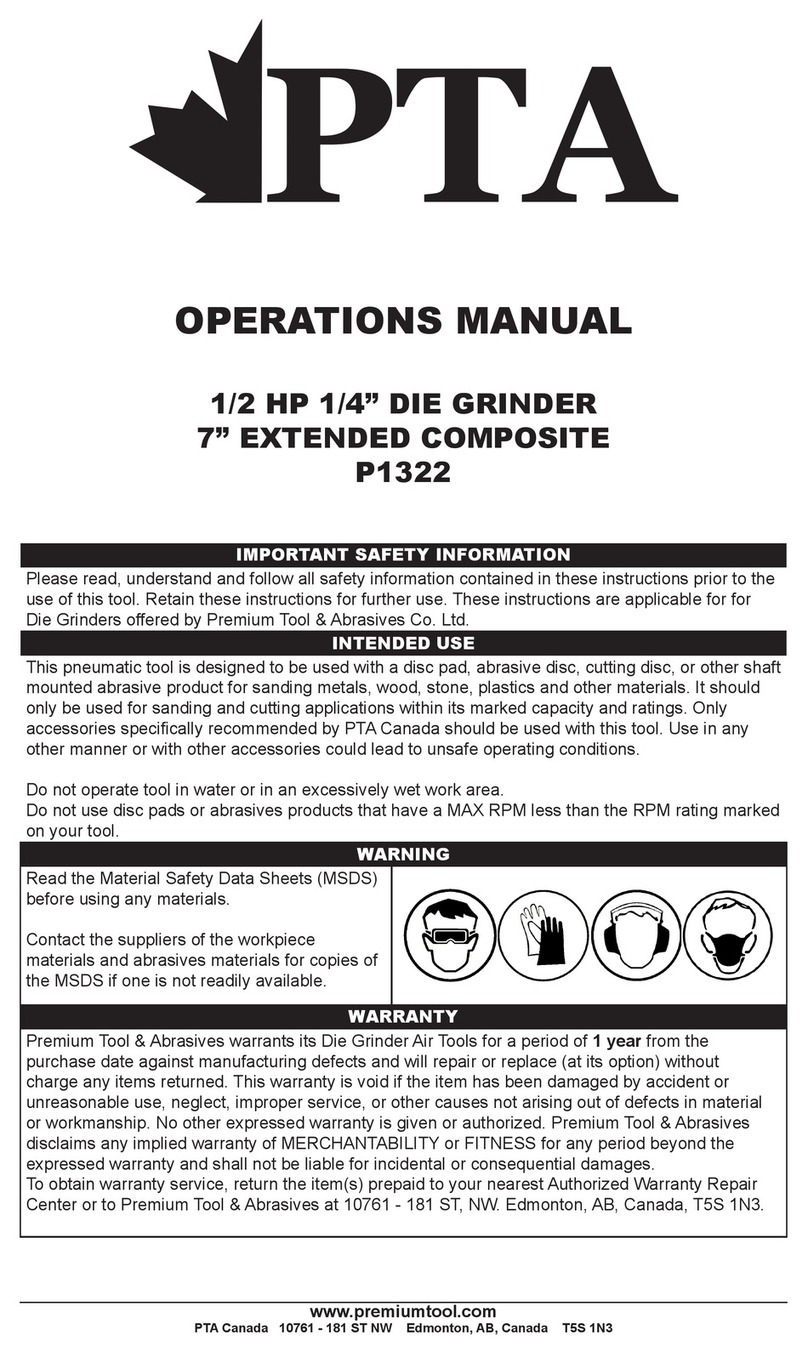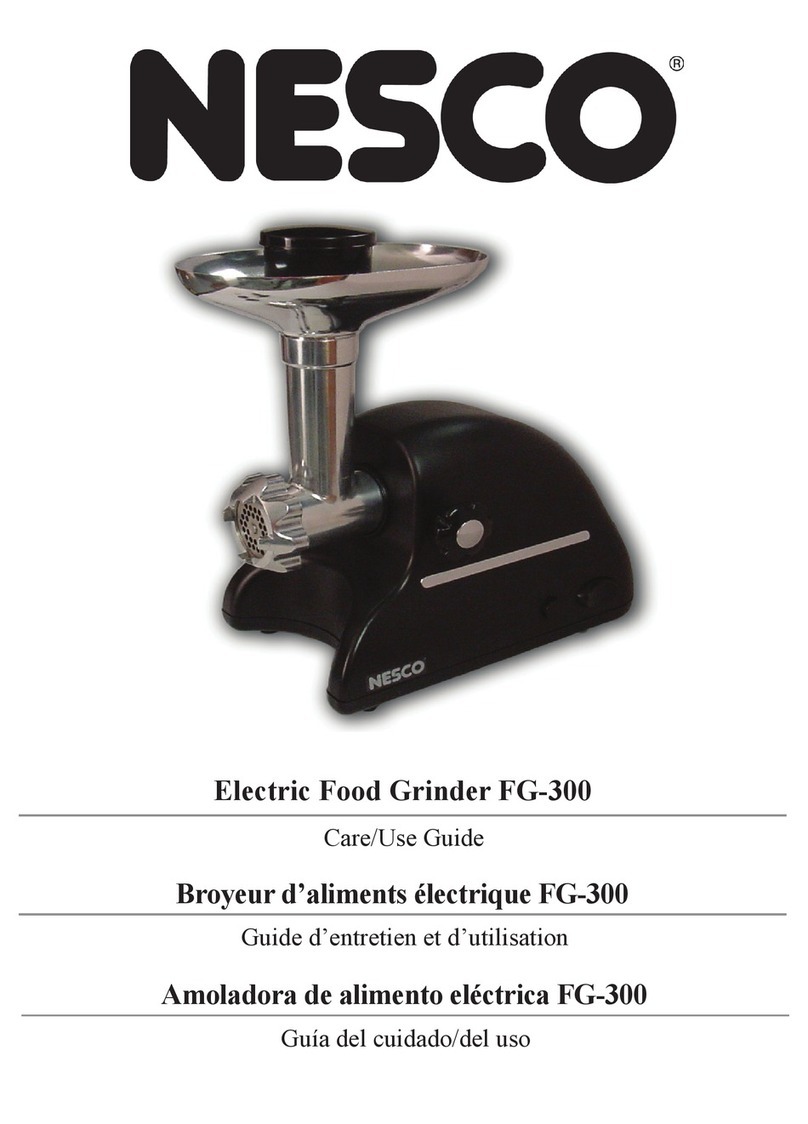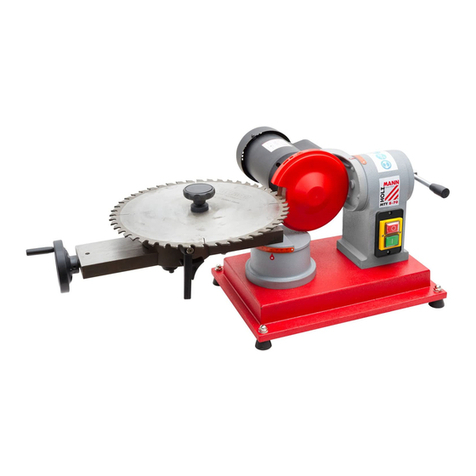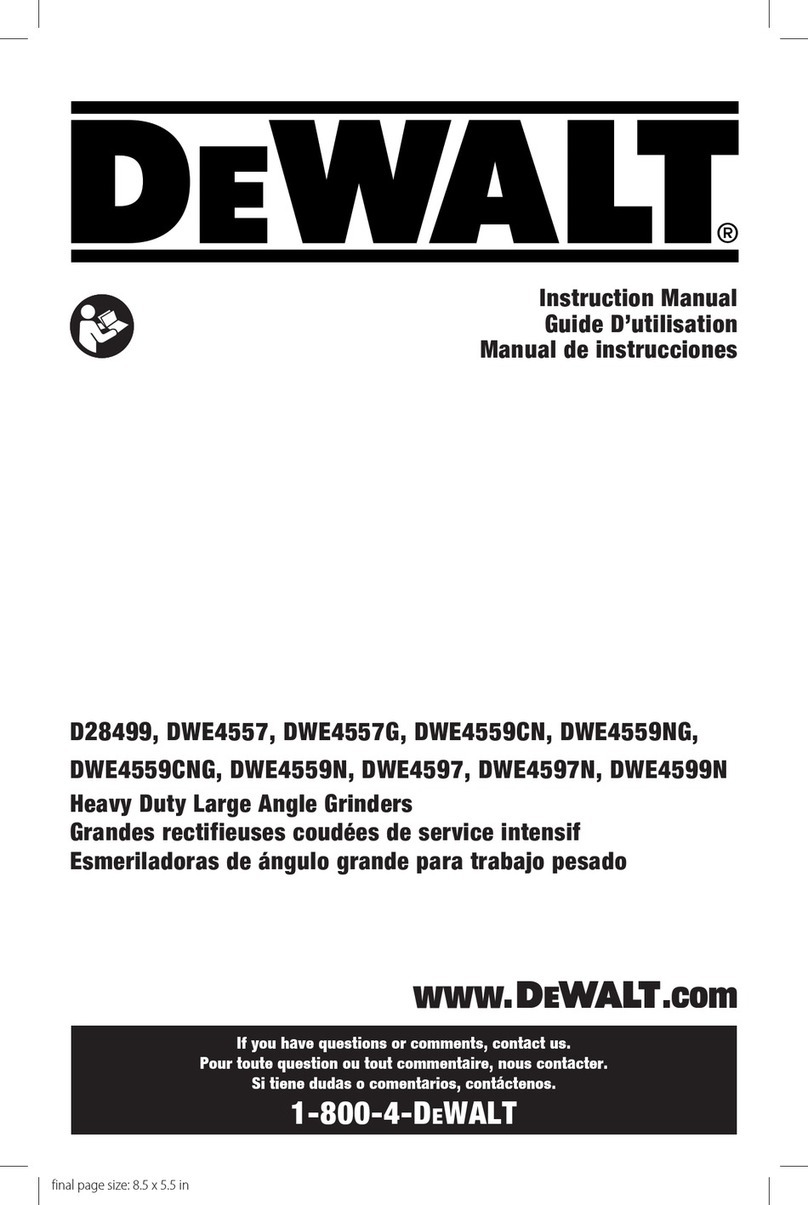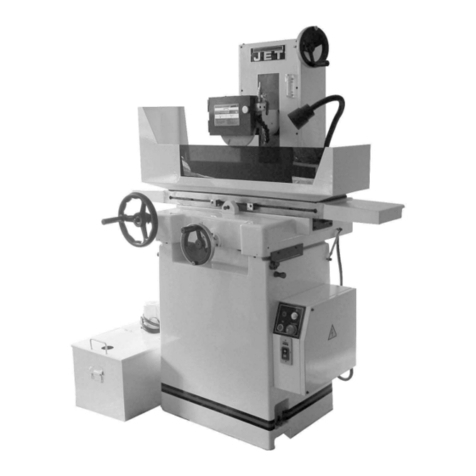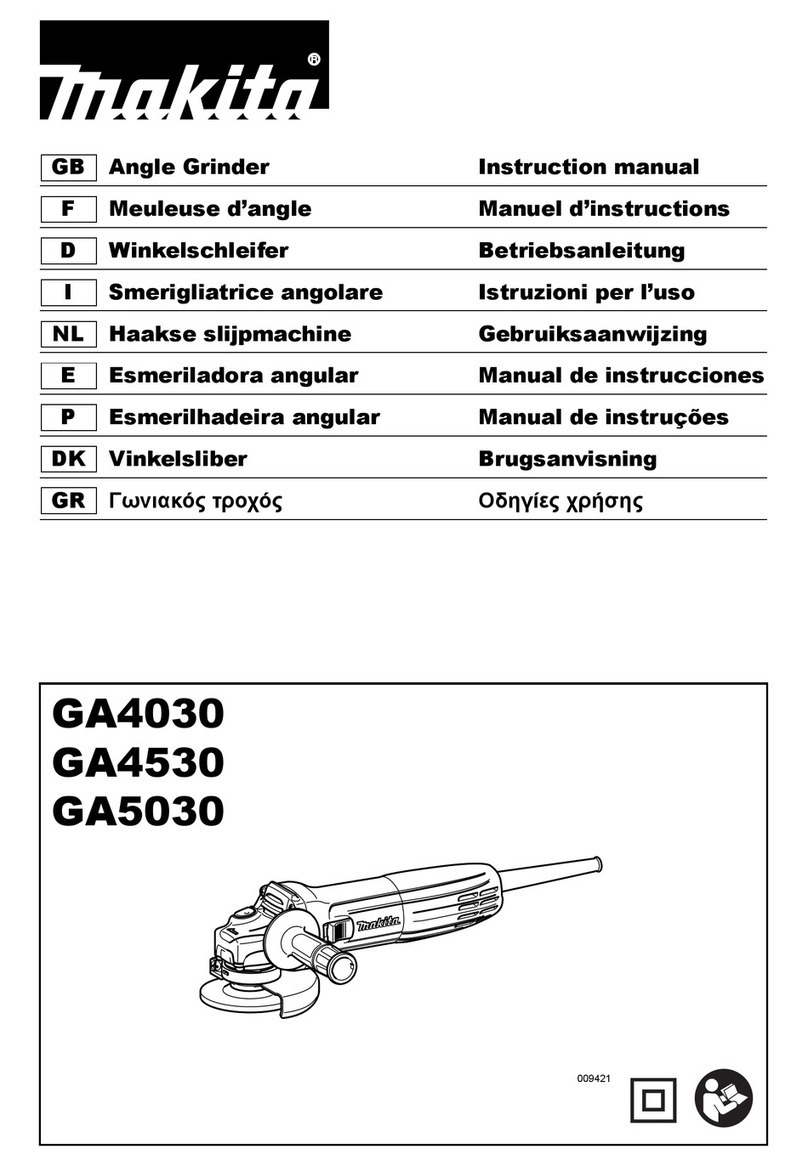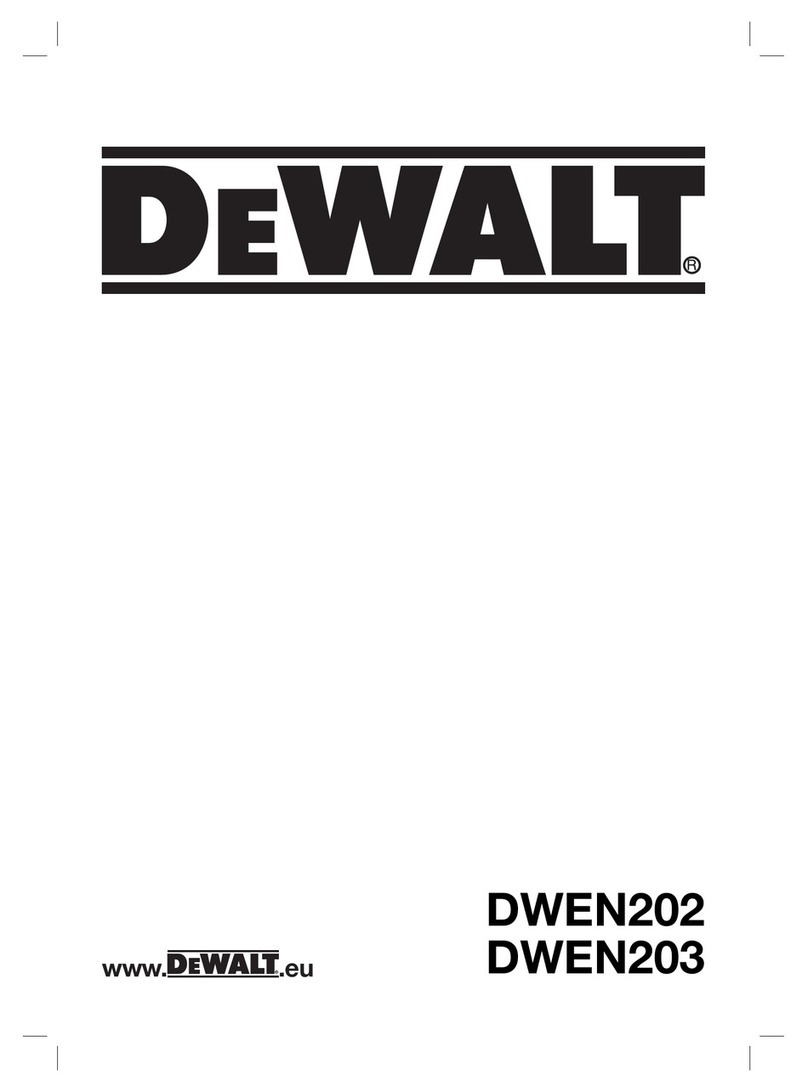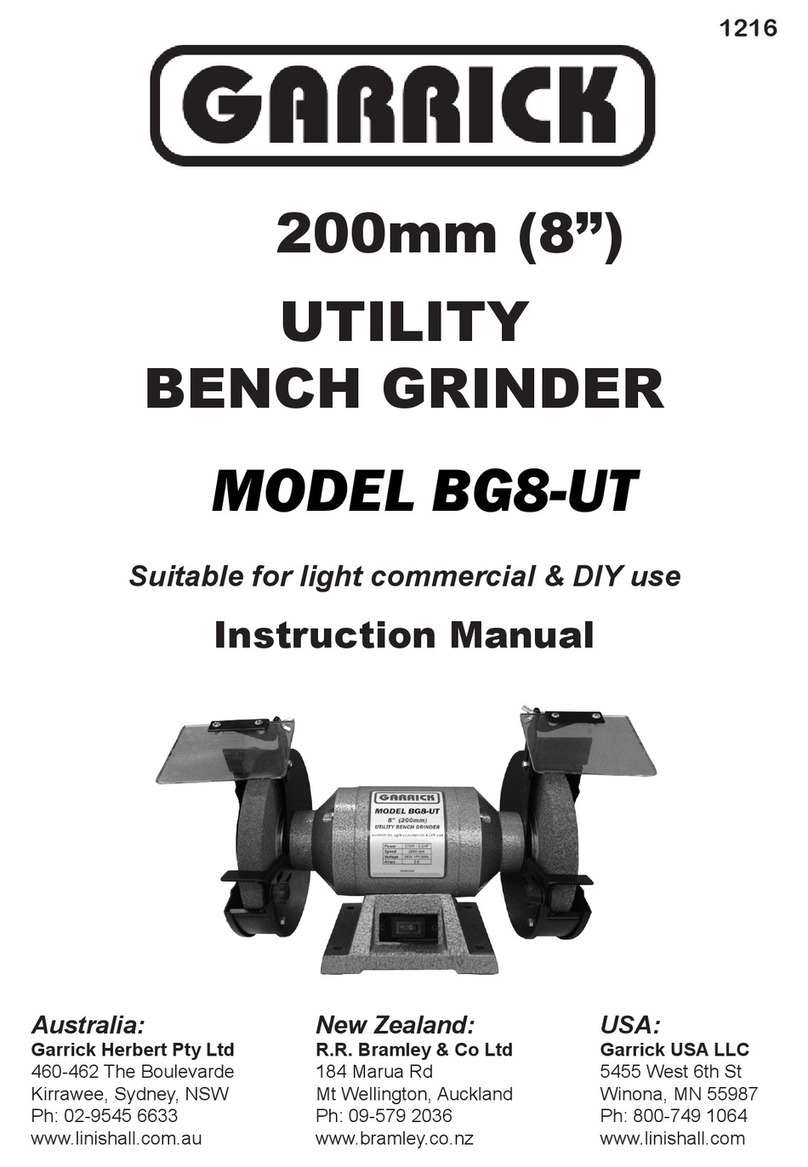
BEFORE USING THIS TOOL
Before using the tool, make sure the mains voltage is
correct: it must be the same as that on the specification
label. Machines with 230V can also be connected to a
220-V mains supply.
DISCS AND WHEELS
WARNING! For safety reasons always disconnect
the machine from the mains before changing the
grinding wheel.
The discs and wheels must be protected from bangs and
knocks.
Before starting up the machine, check that the grinding
wheel is securely clamped (see Fig. 2).
Warning! Use protective goggles while working.
Do not use wheels of a larger diameter than that shown
on the specifications plate.
The centrifugal force tends to break the grinding wheel
as its speed increases. Said centrifugal force increases
proportionately to the square of the peripheral speed,
thus, for example, while the increase in the speed of a
wheel in going from 30 m/s to 35 m/s is 17%, the in-
crease in the centrifugal force is 36%.
Owing to the many different shapes of grinding wheels
with shank, the type of bonding and the degree of hard-
ness, no exact diameter capacity can be given.
For example, a cylindrical wheel of diameter 25 and
height 19, with ceramic bonding, allows a speed of
35,100 r.p.m. yet the same diameter with height 50 only
allows a maximum speed of 15,900 r.p.m. The values
shown in table 1 are approximate for general operations.
For special applications it is always best to consult the
manufacturer. It is advisable to insert the shank as far as
possible inside the clamp in order to avoid any bending
or possible vibrating of the grinding wheel.
MOUNTING GRINDING DISCS AND WHEELS
WARNING! For safety reasons, the machine should
always be unplugged from the mains before changing
the disc or wheel.
To mount the grinding wheel, insert the clip into the ma-
chine’s clip-holder shaft, insert the grinding wheel with the
shaft in the clip and turn the nut with a 17-mm spanner,
while holding the nut in place with a 13-mm spanner.
The grinding wheel is dismounted by carrying out this
procedure in reverse order.
PRECAUTION: the clip securing nut must not be
tightened unless a grinding wheel has been inserted
into the clip.
Protect discs and wheels from knocks and blows.
STARTING THE TOOL
WARNING! Check that the mains voltage is the same as
that in the machine’s specifications.
Plug the machine in with the switch off.
Start the machine by turning the switch to position 1
("ON"). To switch off, do the same in reverse.
Speed adjustments
The built-in module permits:
-Soft start.
-The maintenance of a practically constant rated speed
up to rated power.
The control electronics allow continuous pre-setting of
the revolutions to adapt the machine to the type of
material to be worked on. Adjustment is made using the
speed adjustment switch C, which has 6 positions to
regulate the speed.
SPECIFICATIONS AND APPLICATIONS OF TABLE 1
Grinding wheel (A)
Abrasive:
Corundum: suitable for steels and steel alloys.
Silicon carbide: cast iron, light metals, hard metal, build-
ing materials.
Hardness:
Soft: hard materials, smooth surfaces, more intense
roughing, fine polishing.
Hard: soft materials, rough, sharp surfaces, less intense
and longer lasting roughing, high quality surface.
Hard Metal Milling Cutter (B)
Rough toothing: stainless steel, steel alloys, light metals.
Fine toothing: hard steels, hardened steels.
Felt Wheels (C)
These require paste for polishing.
Valve grinding, shiny finishing of ground or polished
surfaces.
Fans (D)
Dies and moulds and light deburring work.
Wire Brush (E)
Steel wire: for cleaning rusty surfaces.
Brass wire: for matt surfaces.
Stainless steel wire: for stainless steel items.
ACCESSORIES
Accessories and their corresponding order number can
be found in our catalogues.
MAINTENANCE AND CARE
WARNING! Always unplug the machine before carrying
out work on it.
-Inspect the tool: Using a worn deburring or cutting
tool will diminish the efficiency of the work and could
damage the motor.
-Inspect the mounting screws: Regularly inspect all
the mounting screws and ensure they are firmly tighte-
ned. Should any screw be loose, tighten it immediate-
ly. Failure to do so could put you at serious risk.
-Motor maintenance: Always take the greatest care
over this and make sure that the motor winding is not
damaged and does not become wet with oil or water.
-The vents should always be kept clean and free of
obstacles.
-Clean the machine thoroughly after each use. Blast the
motor regularly with compressed air.
-Check that the mains lead is in good condition. If it is
not, take it to an Official Service Centre to have it
replaced.
-Brush replacement: The brushes should be replaced
after 150 - 200 hours use or when they are less than
10 mm long. Have this done by an Official Service
Centre. We recommend that at every second change
of brushes, you take the machine to one of our Official
Service Centres for general cleaning and oiling.
-Use only Felisatti accessories and spares. Parts the
changing of which is not covered in this instruction




